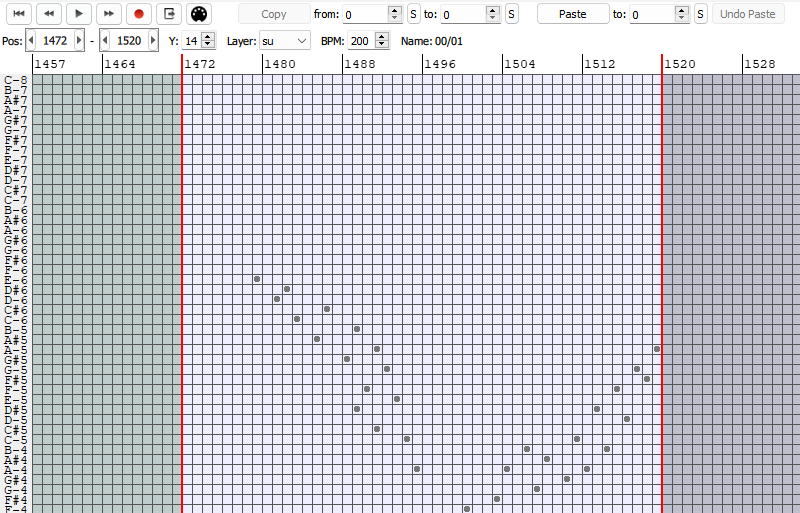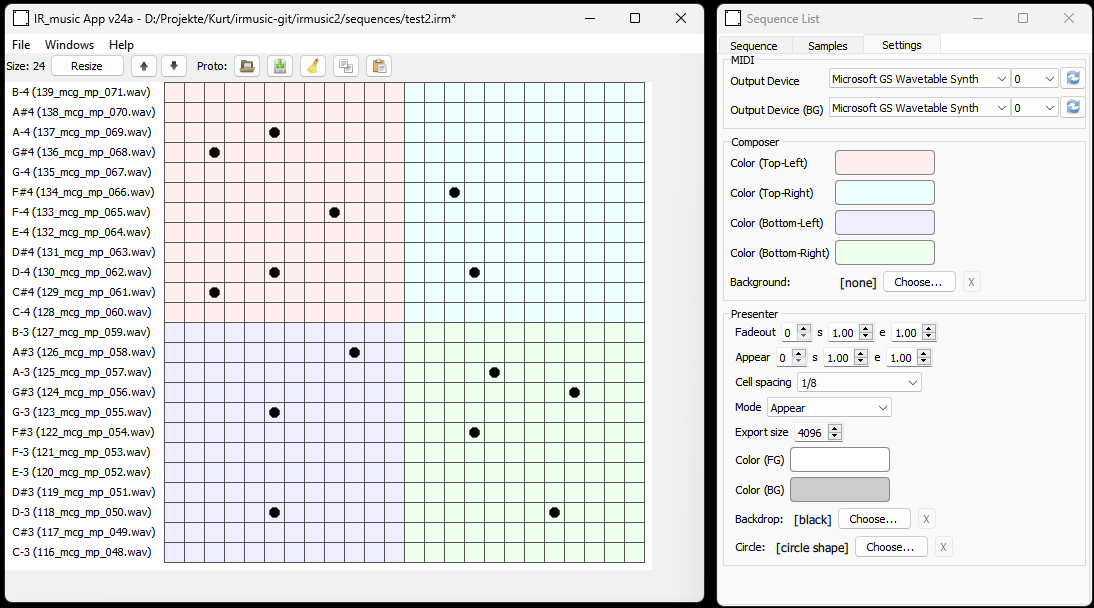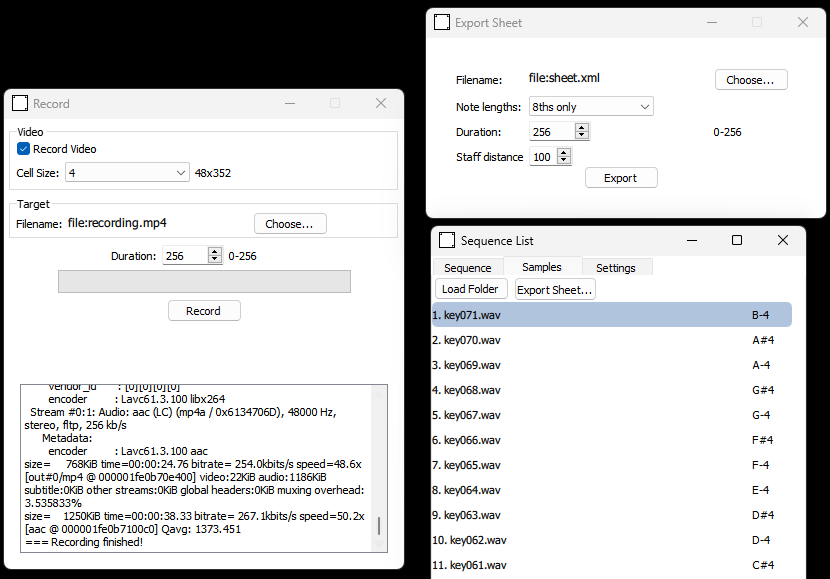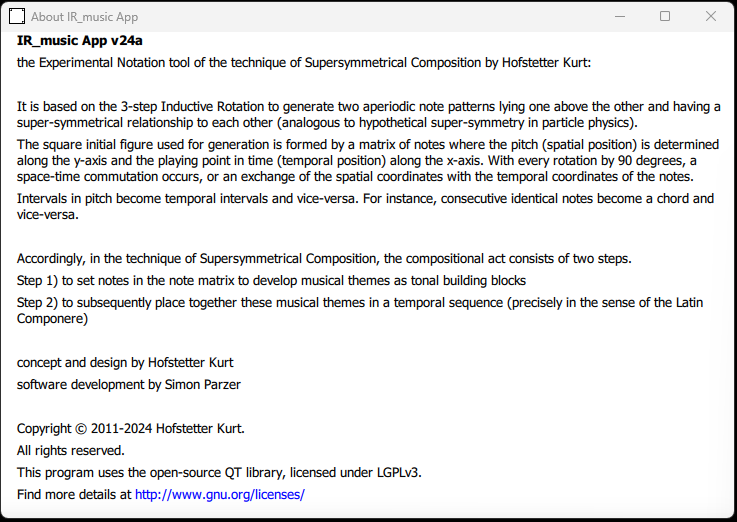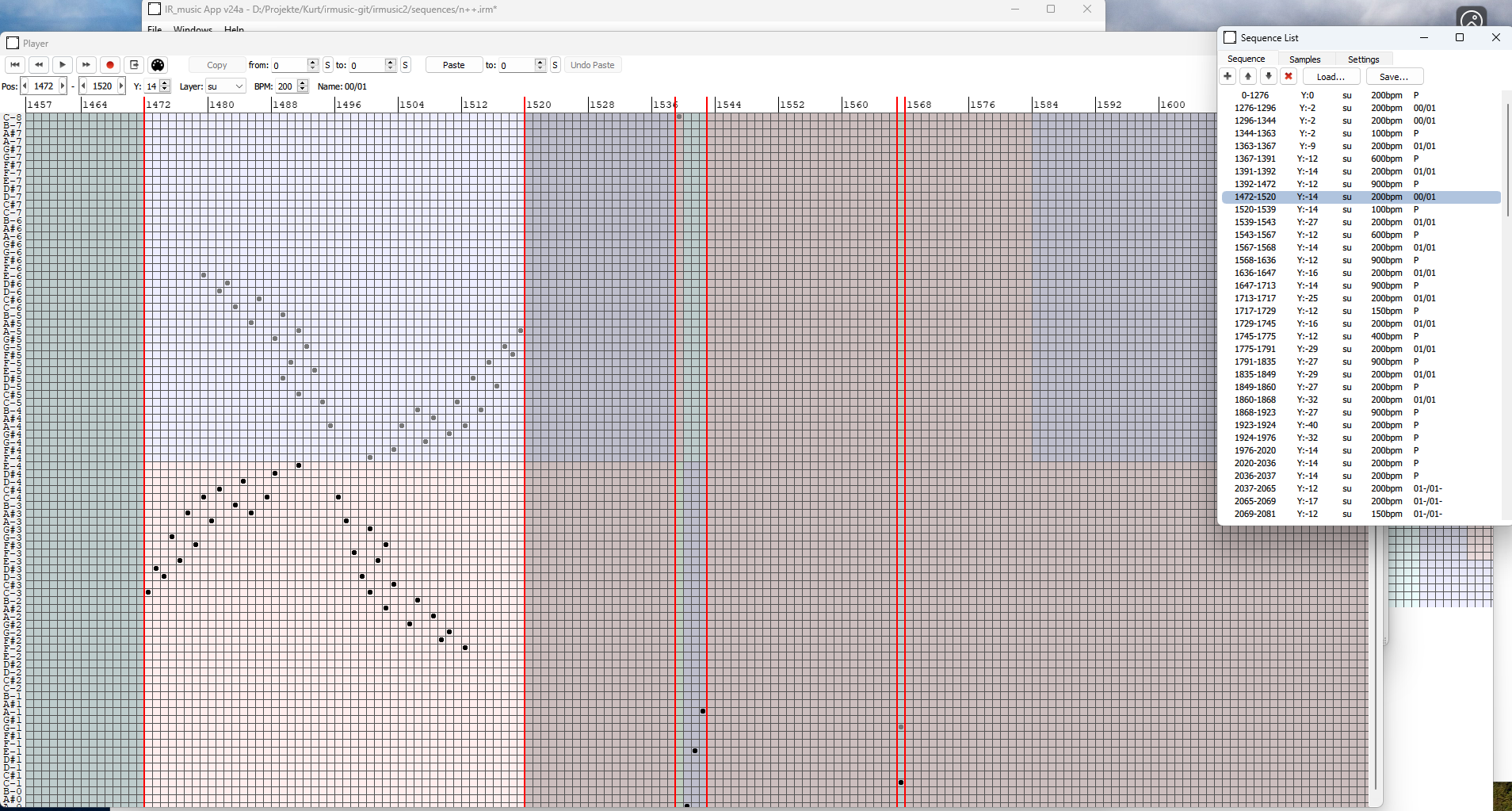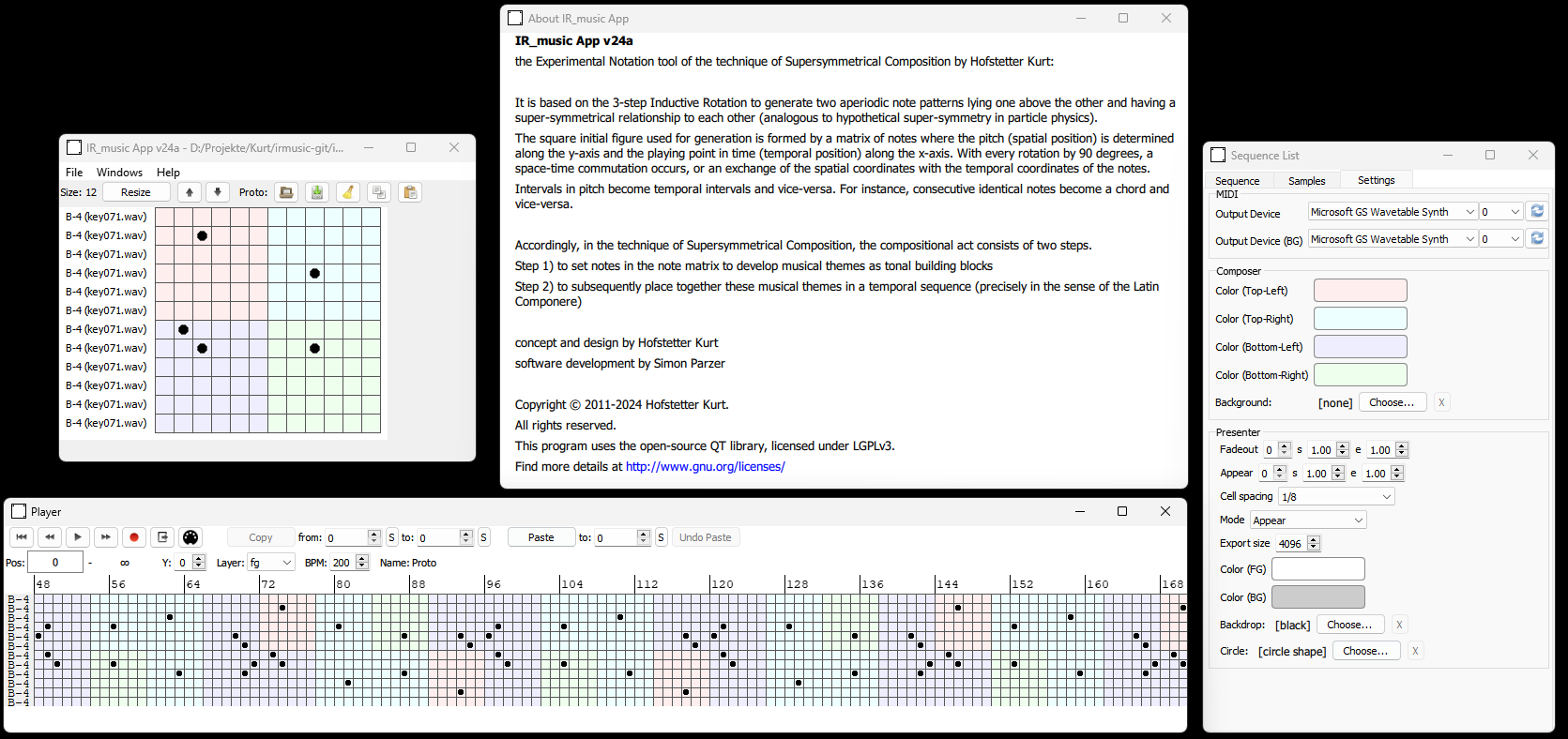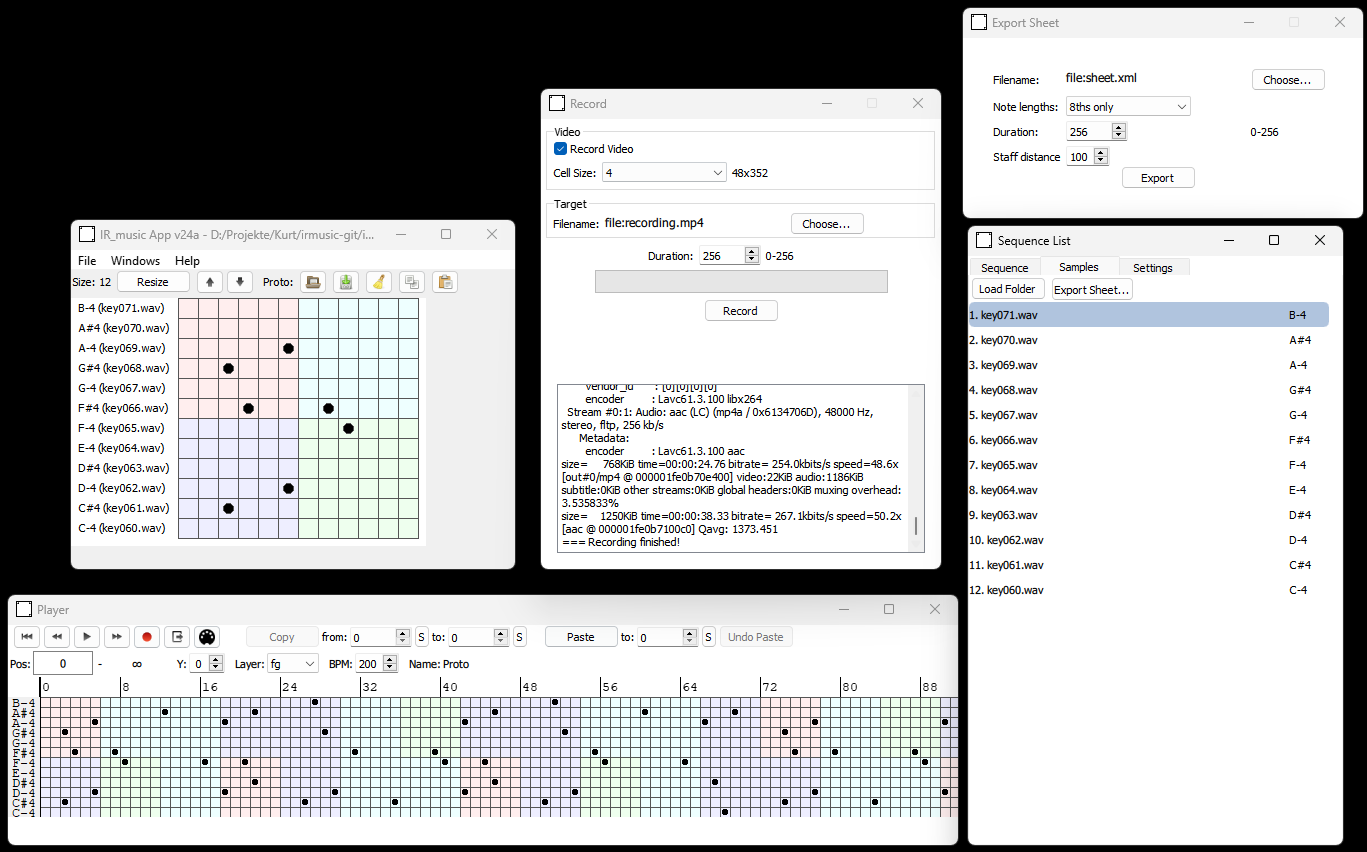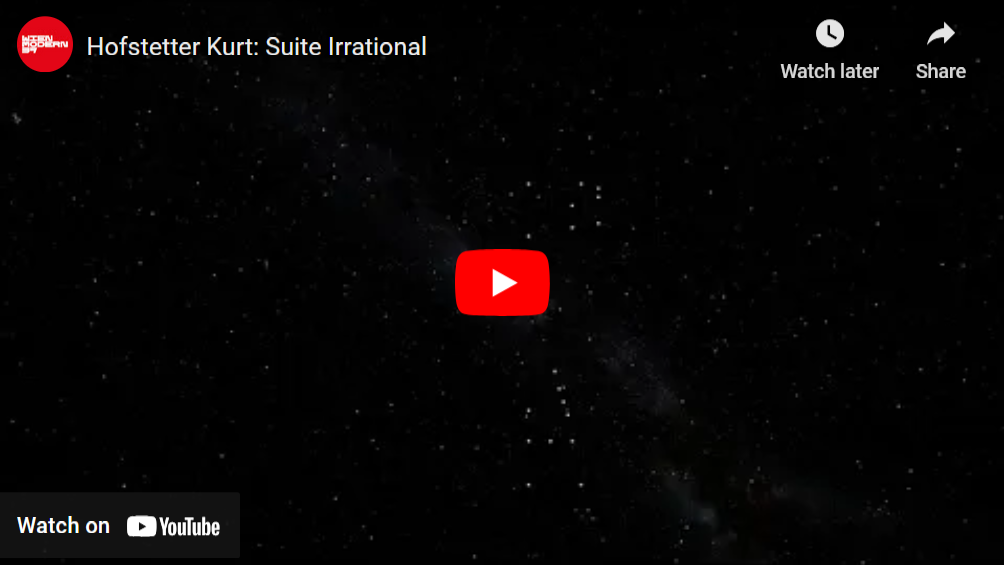IR_music App
I was commissioned by artist Hofstetter Kurt to create this experimental tool based on his vision of using his patented “Inductive Rotation” method to create music. The basic idea is to interpret the nonperiodic Inductive Rotation tiling as a piano roll and be able to listen to the resulting music.
The first prototype I implemented in Python. The UI implemented using Tkinter enables the artist to design a prototile which is a matrix of boolean values represented by dots. The resulting pattern is played back continuously using a wavetable synthesizer using numpy to mix the samples and PyAudio to play back the resulting waveform.
After a couple of iterations I re-implemented the tool using C++ and Qt instead of Python. I then continued to work on the tool, adding many new features. Here is a list of major additions to the program:
- load different samples
- export audio in WAV format
- sequencer, to make a composition from multiple prototiles
- export sheet music in MusicXML format
- real-time visualization and video export in MP4 format
- output to MIDI device
In all iterations of the tool it is possible to modify the prototiles in real-time, while the music is playing. This tight feedback loop encourages exploration and experimentation.
Hofstetter Kurt uses the tool to this day for composing experimental music. An example can be seen in the following video. Both audio and visuals were generated using IR_music App.
The premiere of this piece called “Suite Irrational” was streamed on YouTube in 2020 due to the COVID Pandemic. It was performed again in 2021, as originally planned, in the digital planetarium of the Natural History Museum in Vienna.
There have also been live performances of this type of music with human musicians using actual instruments. In this case the music was first created using IR_music App, exported to MusicXML format and then edited and re-arranged using a musical notation program such as MuseScore 3 or Sibelius.
